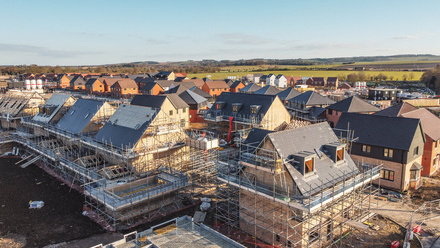Housing Secretary Robert Jenrick has announced a series of new measures to improve building safety, including establishing a building safety regulator within the Health and Safety Executive to oversee the new regime and publishing consolidated guidance for building owners.
Chancellor Rishi Sunak also announced a £1 billion Building Safety Fund for the removal of dangerous cladding from high-rise buildings. “The Government is committed to bringing about the biggest change in building safety for a generation,” said Jenrick. “Progress on improving building safety needs to move significantly faster to ensure people are safe in their homes and building owners are held to account.” Jenrick confirmed the Government will consult on extending the ban on combustible materials to buildings below 18 metres and will seek views on how risks are assessed within existing buildings to inform future policy.
The slow pace of improving building safety standards will not be tolerated, said Jenrick, who made it clear that from March 2020 he will be naming the owners of buildings where remediation has not started to remove unsafe Aluminium Composite Material (ACM) cladding. The package comes as the Prime Minister has written to the chairman of the Grenfell Tower Public Inquiry, Sir Martin Moore-Bick, updating him on the Government’s response to Phase 1.
The package of measures include:
1. Building Safety Regulator
The Health and Safety Executive (HSE) will begin to establish the new regulator in shadow form immediately, ahead of it being fully established, following legislation. Dame Judith Hackitt will chair a Board to oversee the transition. It will raise building safety and performance standards, including overseeing a new, more stringent regime for higher-risk buildings, drawing on the experience and capabilities of other regulators to implement the new regime.
2. Advice for multi-storey, multi-occupied buildings
The Government-appointed Independent Expert Advisory Panel (IEAP) has clarified and updated advice to building owners on actions they should take to ensure buildings are safe, with a focus on external wall systems. The advice simplifies the language, consolidates previous advice into one place, and makes clear that building owners need to do more to address safety issues on residential buildings under 18 metres.
It additionally reflects the independent panel view that cladding material comprised of ACM (and other metal composites) with an unmodified polyethylene core should not be on residential buildings of any height and should be removed. A call for evidence will be published, seeking views on the assessment of risks within existing buildings to provide an evidence base to guide decisions for both existing buildings and future regulatory regimes.
3. Fire doors
The consolidated advice makes clear the actions building owners should take in relation to fire doors. The Government welcomes the commitment by the Association of Composite Door Manufacturers to work with building owners to remediate doors that have failed tests and will continue to monitor the situation closely to ensure this commitment is followed through.
4. Remediation of buildings with ACM cladding
To speed up remediation, a construction expert will be appointed to review remediation timescales and identify what can be done to improve pace in the private sector. To ensure cost is not a barrier to remediation, the Government is considering different options to support the remediation of buildings, examining options to mitigate costs for individuals or provide alternative financing routes.
5. Combustible cladding ban
The Government has launched a consultation into the current combustible cladding ban, including proposals to lower the 18-metre height threshold to at least 11 metres. So far, it has relied on simple height limits with binary consequences and plans to gather ideas before commissioning works to develop a more sophisticated matrix of risk factors.
6. Sprinklers
The Government’s consultation on sprinklers and other measures for new-build flats concluded on 28 November 2019. It has proposed lowering the height threshold for sprinkler requirements in new buildings and is due to set out detailed proposals on how it will deliver the technical review of fire guidance.
What do the regulations mean for the devolved nations?
While the HSE has a UK-wide remit, it is understood that the new building safety regulator will only cover England, although further details will emerge as it grows from being a shadow regulator.
Northern Ireland
It is likely to be autumn before a clear policy is established for Northern Ireland around fire safety however we will keep you updated in Master Builder, as the policy starts to take shape.
Wales
Building Regulations is a devolved matter in Wales. It is not clear how the new building safety regulator will interact with the system in Wales but some of the measures covered in the Building Safety Programme are already in place. Sprinkler systems have been a requirement for all new and converted houses and flats, including care homes, registered group homes and sheltered housing in Wales since 2016. The use of combustible cladding on external walls of highrise buildings was banned in mid-January 2020.






